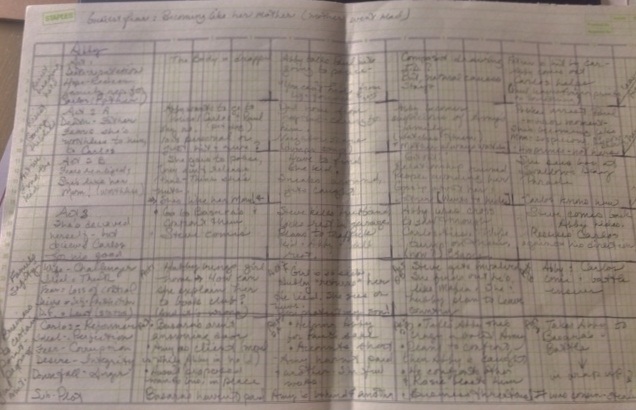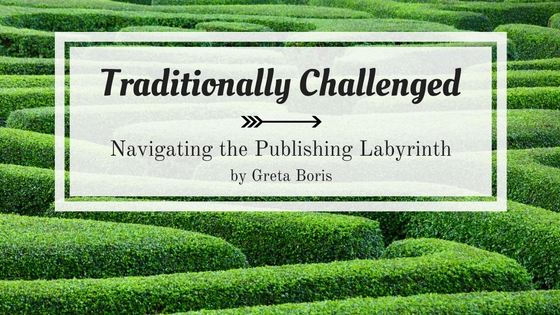by Greta Boris
I’m bringing back a “best-of” article this month, and I have an ulterior motive. I wrote this a year ago and have been refining my use of both the Enneagram Personality types and the Plot Menu. I’ve taught on this topic at several writers events and have learned what works and what doesn’t for most people.
If you’ve been struggling through the whole “pantsing” versus “plotting” thing and are looking for a new method, Megan and I will be teaching a hands-on workshop in just a couple of weeks. We’ll be there to help you create a Plot Menu for your next story, or organize the one you’ve got, and that’s just a piece of the what you’ll get out of the morning.
For a complete description of the class click here, but make sure you come back and read the post below!
None of the cool kids plot.
I began my writing career (before it was a career) as a pantser. For some reason it seemed more “writerly.” Didn’t Steven King criticize James Patterson, or maybe it was Dean Koontz, or maybe both of them, for plotting their novels? I quickly—by quickly I mean three terrible novels, or approximately 280,000 wasted words later—discovered I’m not a smorgasbord kind of girl. I must plot.
When there are too many choices, I lose my appetite.
Pendulum swing. I pulled out color coded 3×5 cards, took two plotting classes, read three books on the topic, and dove in. Then I plotted the life out of a story. I wrote down so many details, I had no interest in fleshing them out. The whole thing was a bore.
Since that time, my pendulum has been swinging in ever-decreasing arcs. Recently, I arrived between the forty yard lines where, I’m told, most of the game is played. For me, it’s a sweet spot. I have perimeters, but I still have room to experiment.
I was too busy teaching and hobnobbing to attend more than a few workshops at the Southern California Writers Conference in September. But I did get to two that were pivotal: Ara Grigorian’s class on story beats and Seth Wagerman’s class on character development. And I attended them back-to-back, which was what really made the magic happen. My realization was character and structure are the perimeters, the yard lines, between which our work can bounce.
But back to the food analogy. I’m better at food than football.
A flexible meal-plan works best for me.
For a balanced meal, you need two things: protein and carbohydrates. For a balanced story, you need characters and structure. It may seem the possibilities are endless, but they’re not. There are only so many basic personality types. If we learn them, we won’t be mixing up fish and fowl.
The same is true for story structure. Whether you’re a fan of Joseph Campbell’s hero’s journey, the screenplay approach of Save the Cat, or James Scott Bell’s Write Your Novel From the Middle, we must agree that story is more than a sequence of events. There must be inciting incidents, hooks, plot turns, mirror moments, black nights, and grand battles. And they must occur in the right places.
The Plot Menu is born

What I’m about to describe is a method of organizing all the thoughts you ALREADY have about your story. It applies when your research is done, story lines and scenes have been jostling around in your brain, and the characters have been whispering their secrets in your ear.
I’d been noodling around with book three in my series, had plotted out several ideas, knew who my characters were, but it was a mess. Consequently, I was having a hard time sitting down and getting any real writing done.
But my brain started firing as I sat in those two workshops. When I got home from the conference, I pulled out a spreadsheet. The old-fashioned kind, on green paper, and got to work. If you’d like to follow along on your own spreadsheet, you can download one here: Plot Menu Spreadsheet
Character First
The first thing I had to decide was who my main characters were. Not their names, ages, physical descriptions, etc… Although all that’s important, it’s not important to the plot. What’s important to the plot is their particular personality profiles.
- What drives your character?
- What do they want out of life?
- What’s their greatest flaw?
- What do they admire in others?
These characteristics will determine the kinds of decisions they make, and their decisions are what push the story forward.
Structure Second
The next choice I had to make was the story structure method I intended to use. This was easy. Three acts with the second act divided into two parts makes the most sense to me. It’s more, or less, as follows:
- Act one: Hook, inciting incident, and the step across the threshold
- Act two A: Resisting the new world, pinch point, and mirror moment
- Act two B: Proactive change, pinch point, and false victory
- Act three: Set-back, dark night of the soul, final battle, denouement
Four rows on my spreadsheet represented the above division of acts for my main character. Other POV characters get their own row, see below.
Now for the columns:
- Column 1: The driver. Primary motivation driving this act
- Column 2: Personality traits, history, desires being highlighted in this act
- Columns 3 – 6: Set pieces. This is where you describe the hook, inciting incident, the step across the threshold, or any other scenes, or information that must be included in this act. (You can add columns here if you have more scenes in your brain, but try to keep your menu small and succinct. That’s the beauty of it.)
- Column 7: Transition: Primary motivation for moving to the next act.
Side characters need to eat too.
If you have side characters with their own points of view, give them their own rows. Their information is divided by cells instead of columns.
- Cell 1: Their driver. Primary motivation in story.
- Cell 2: Their personality type. What defines them?
- Cells 3-6 respectively: Must accomplish in Act 1, Act 2A, Act 2B, Act 3
- Cell 7: Their wrap-up
I keep the Plot Menu in my novel’s notebook and pull it out regularly. I wrote it in pencil so I can add and delete as I go. If I’m not sure what the pinch point should be in Act 2A until half way through Act 1, no problem. I add it in. The menu reminds me it needs to be there.
The process works for me because it limits my choices. I don’t get overwhelmed by decisions and lose my appetite for the story. But it’s not so detailed I’m sick of my options before I even start.
If you’re having a hard time finding your own planning/plotting method, give it a try and let me know what you think. If you have another method you swear by, share it!
***

Greta Boris Director
Greta Boris is the author of the 2017 releases, A Margin of Lust, The Scent of Wrath, and The Sanctity of Sloth, the first three books in her 7 Deadly Sins domestic suspense series. Her nonfiction work includes the Amazon Bestseller The Wine and Chocolate Workout – Sip, Savor, and Strengthen for a Healthier Life and Aspiring to Author – A Guide for Your Publishing Career. She’s also the Director of O.C. Writers, a community of over 1,000 published and aspiring authors in Orange County, California.
You can visit her at http://gretaboris.com. She describes her work (and her life) as an O.C. housewife meets Dante’s Inferno.


This is great, Greta! Excellent “how-to” guide. Thank you 🙂
Thanks, Diane!
This is THE hardest part for me, developing the discipline to organize. I think it must be a right-brain, left-brain struggle or something like that, or maybe laziness. I’m not quite sure which right now. I’m going to try the plot menu spreadsheet. I hope it works when a writer is in the middle of a mangled mess. LOL!
So I’m thinking that if we use the example of “Cinderella,” the inciting incident in Act 1 is the written Invitation to all women in the kingdom to the Grand Ball. Right?
Then, is Act 2 the desctruction of the dress the mice made for Cindy?
Would Act 3 be the Fairy Godmother as the “change agent” and
Act 4, the loss of the slipper where the final battle is for Cinderella to speak up, come forward, and try on the shoe to prove what seems impossible to the world? Something like that, there??? LOL. I find the identifying of the elements of the plot very difficult.
This is a definite “bookmark-it” article, Greta. Thank you! I’m off to open up the Plot Menu Spreadsheet file now and crossing my fingers it works in the middle of NaNoWriMo !
Hope it helps!
I have to laugh at what Billie Kelpin said…I think I am just lazy. I wrote two novels without the structure of plotting. Going back and editing I realize that “some” plotting would have been helpful. My fourth novel I am trying to be more structured in craft. But I have to say it is stifling me. I feel stuck, and not as creative. I think I need to switch to my right brain to fully create. So, working on a balance. This is a great overall view of what is needed to write well. I sent it off to a few people. I will review it as well and take from it what I need, and leave the stuff I am too lazy to do.
I don’t think anyone who has done the work of submitting like you have, Elizabeth, has a lazy bone in her body. Let’s go with the brain thing.
Greta got me on this plot kick today. I liked the bolded points in this article. It speaks to how to know if your subplots don’t have to be there, etc. http://www.writersdigest.com/online-editor/too-much-of-a-good-thing-dont-sink-a-story-with-too-much-plot
Great addition!
ONE IMPORTANT THING about the PLOT MENU SPREADSHEET:
So I downloaded Greta’s VERY helpful chart and started to type in the boxes. I couldn’t get the text to wrap around from the top of each box. (I then called my software engineer husband at work since I knew he’d know what to do. (If I could post a screen shot here I would, but here’s the written version of what to do if you had the same problem) :
HIGHLIGHT one full Column (A, B, C … – For some reason it didn’t work when I highlighted all the columns at once.
RIGHT-CLICK to get the drop-down menu
CHOOSE: FORMAT CELLS
Click on the ALIGNMENT TAB
In the Alignment box, Go to TEXT ALIGNMENT:
Choose: TOP
Still in the Alignment box, go down to TEXT CONTROL
Choose the Box: WRAP TEXT
Repeat for each column (unless your an Excel guru and know how to successfully format the cells all at once.) Doing it one by one, though, is not a big chore.
You will then be able to type from the top of each box and the text will wrap around.
On different issue: Sorry for my duplicate posts above (I had a spelling error and article error in the first posting and thought I was deleting it with the new post, but it didn’t work)
This is so helpful, Billie. I couldn’t figure out how to do it myself. I figured I’d just print it and write in by hand, but I know some people like to do it all on their computers. Thanks!
By an amazing coincidence, I was trying to figure out how to wrap text in an Excel file at work. Problem solved!
Thanks!
What timing!
Yay, Greta! A map for the journey is a must. Yours is a good one.
What a lot of information! My head is swimming. Being a strict pantser, I’ve had trouble with various methods of plotting. But the main problem with pantsing is when you finish your story and go back to read it, there can be some major holes. So I’ll definitely give your worksheet a look-see. Hopefully, I can figure it out and stop with those stupidly obvious holes!
Great article, will try this out on my next net new.
Hope it helps. Let me know.
Loved this, Greta! So helpful!
Yay! Glad to be of service, Debra. Miss you at Fictionaires.